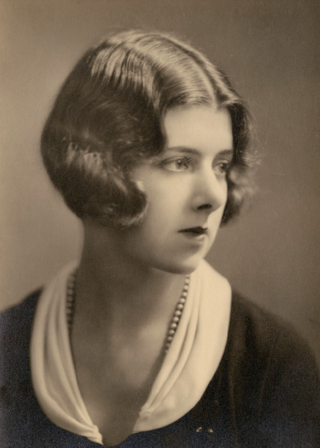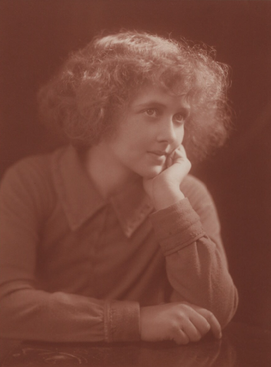
Dame Daphne du Maurier, Lady Browning, was an English novelist, biographer and playwright. Her parents were actor-manager Sir Gerald du Maurier and his wife, actress Muriel Beaumont. Her grandfather was George du Maurier, a writer and cartoonist.

Sir James Matthew Barrie, 1st Baronet, was a Scottish novelist and playwright, best remembered as the creator of Peter Pan. He was born and educated in Scotland and then moved to London, where he wrote several successful novels and plays. There he met the Llewelyn Davies boys, who inspired him to write about a baby boy who has magical adventures in Kensington Gardens, then to write Peter Pan, or The Boy Who Wouldn't Grow Up, a 1904 West End "fairy play" about an ageless boy and an ordinary girl named Wendy who have adventures in the fantasy setting of Neverland.

Finding Neverland is a 2004 biographical fantasy film directed by Marc Forster and written by David Magee, based on the 1998 play The Man Who Was Peter Pan by Allan Knee. The film is about playwright J. M. Barrie and his relationship with a family who inspired him to create Peter Pan. The film earned seven nominations at the 77th Academy Awards, including Best Picture, Best Adapted Screenplay, and Best Actor for Johnny Depp, and won for Best Original Score. The film was the inspiration for the stage musical of the same name in 2012.

Michael Llewelyn Davies was – along with his four brothers – the inspiration for J. M. Barrie's characters Peter Pan, the Darling brothers, and the Lost Boys. Late in life, his only surviving brother Nico described him as "the cleverest of us, the most original, the potential genius." He died in ambiguous circumstances, drowning with a close friend – and possible lover – just short of his 21st birthday. He was a first cousin of English writer Daphne du Maurier.

Peter Llewelyn Davies was the middle of five sons of Arthur and Sylvia Llewelyn Davies, one of the Llewelyn Davies boys befriended and later informally adopted by J. M. Barrie. Barrie publicly identified him as the source of the name for the title character in his 1904 play Peter Pan, or The Boy Who Wouldn't Grow Up.

George Llewelyn Davies was the eldest son of Arthur and Sylvia Llewelyn Davies. Along with his four younger brothers, George was the inspiration for playwright J. M. Barrie's characters of Peter Pan and the Lost Boys. The character of Mr. George Darling was named after him. He was killed in action in the First World War. He was the first cousin of the English writer Daphne du Maurier.

Sir Gerald Hubert Edward Busson du Maurier was an English actor and manager. He was the son of author George du Maurier and his wife, Emma Wightwick, and the brother of Sylvia Llewelyn Davies. In 1903, he married the actress Muriel Beaumont, with whom he had three daughters: writers Angela du Maurier (1904–2002) and Dame Daphne du Maurier (1907–1989), and painter Jeanne du Maurier (1911–1997). His popularity was due to his subtle and naturalistic acting: a "delicately realistic style of acting that sought to suggest rather than to state the deeper emotions". His Times obituary said of his career: "His parentage assured him of engagements in the best of company to begin with; but it was his own talent that took advantage of them."

John Llewelyn Davies was the second eldest of the Llewelyn Davies boys befriended by Peter Pan creator J. M. Barrie, and one of the inspirations for the boy characters in the story of Peter Pan. He served in the Royal Navy during World War I. He was the first cousin of the English writer Daphne du Maurier.

Nicholas "Nico" Llewelyn Davies was the youngest of the Llewelyn Davies boys, who were the inspiration for J. M. Barrie's Peter Pan and the Lost Boys. He was only a year old when Peter Pan, or The Boy Who Wouldn't Grow Up hit the stage in 1904, and as such was not a primary inspiration for the characters of Peter and the Lost Boys. However he was eight years old when the novel adaptation Peter and Wendy was published, and in later editions of the play, the character Michael Darling's middle name was changed to "Nicholas". He was the first cousin of the English writer Daphne du Maurier.
The Davies boys were the inspiration for the stories of Peter Pan by J. M. Barrie, in which several of the characters were named after them. They were the sons of Sylvia (1866–1910) and Arthur Llewelyn Davies (1863–1907). Their mother was a daughter of French-born cartoonist and writer George du Maurier and sister of actor Gerald du Maurier, whose daughter was author Daphne du Maurier. Their father was a son of preacher John Llewelyn Davies, and brother of suffragist Margaret Llewelyn Davies.

Arthur Llewelyn Davies was an English barrister of Welsh origin, but is best known as the father of the boys who were the inspiration for the stories of Peter Pan by J. M. Barrie.

The Lost Boys is a 1978 docudrama miniseries produced by the BBC, written by Andrew Birkin, and directed by Rodney Bennett. It is about the relationship between Peter Pan creator J. M. Barrie and the Llewelyn Davies boys.

St John-at-Hampstead is a Church of England parish church dedicated to St John the Evangelist in Church Row, Hampstead, London.

Peter Pan; or, the Boy Who Wouldn't Grow Up, often known simply as Peter Pan, is a work by J. M. Barrie, in the form of a 1904 play and a 1911 novel titled Peter and Wendy, often extended in Peter Pan and Wendy. Both versions tell the story of Peter Pan, a mischievous little boy who can fly, and has many adventures on the island of Neverland that is inhabited by mermaids, fairies, Native Americans, and pirates. The Peter Pan stories also involve the characters Wendy Darling and her two brothers John and Michael, Peter's fairy Tinker Bell, the Lost Boys, and the pirate Captain Hook. The play and novel were inspired by Barrie's friendship with the Llewelyn Davies family.

Angela Busson du Maurier was an English actress and novelist who also wrote two volumes of autobiography, It's Only the Sister (1951) and Old Maids Remember (1965). Her sister was the novelist Daphne du Maurier, and her grandfather was George du Maurier, a writer and cartoonist.

Guy Louis Busson du Maurier DSO was an English army officer and playwright. He was the son of the writer George du Maurier and brother of Sylvia Llewelyn Davies and the actor Gerald du Maurier.

Finding Neverland is a musical with music and lyrics by Gary Barlow and Eliot Kennedy and a book by James Graham adapted from the 1998 play The Man Who Was Peter Pan by Allan Knee and its 2004 film version Finding Neverland. An early version of the musical made its world premiere at the Curve Theatre in Leicester in 2012 with a book by Allan Knee, music by Scott Frankel and lyrics by Michael Korie. A reworked version with the current writing team made its world premiere in 2014 at the American Repertory Theater in Cambridge, Massachusetts. Following completion of its Cambridge run, the production transferred to Broadway in March 2015.

Hon. Margaret Leslie Hore-Ruthven was a British socialite, one of the "Bright Young Things" of the 1920s. She and her twin sister Alison were included in The Book of Beauty by Cecil Beaton.

Dorothea "Dolly" Ponsonby, Baroness Ponsonby of Shulbrede, was an English writer and close friends of the Llewelyn Davies and du Maurier families. She was the mother of Elizabeth Ponsonby of the Bright Young Things.

Jeanne du Maurier was an English artist. She was the third daughter of Sir Gerald du Maurier and Muriel Beaumont, and sister of writers Daphne and Angela du Maurier.



















